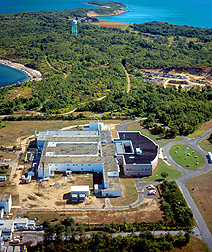Aafia Siddiqui facts for kids
Quick facts for kids
Aafia Siddiqui
|
|
|---|---|
| عافیہ صدیقیؒ | |

Siddiqui in 2007
|
|
| Born | 2 March 1972 |
| Other names | Afiya Siddiqui |
| Education | |
| Height | 5 ft 4 in (1.63 m) |
| Board member of | Institute of Islamic Research and Teaching (President) |
| Criminal charge(s) | Attempted murder, assault with a deadly weapon |
| Criminal penalty | Convicted; sentenced to 86 years in prison |
| Criminal status | Held in the FMC Carswell, Fort Worth, Texas, United States. |
| Spouse(s) |
Amjad Mohammed Khan
(m. 1995; div. 2002)Ammar al-Baluchi
(m. 2003; div. 2003) |
| Children | 3, including Mohammad Ahmed |
Aafia Siddiqui (born March 2, 1972) is a Pakistani scientist who studied the brain. She is currently in a U.S. prison. She was found guilty of trying to harm U.S. officials in Afghanistan. Her story has caused a lot of disagreement between Pakistan and the United States.
Siddiqui was born in Pakistan. She moved to the United States in 1990 to go to college. She earned a degree in biology from the Massachusetts Institute of Technology (MIT). Later, she got a Ph.D. in neuroscience from Brandeis University in 2001. Neuroscience is the study of the brain and nervous system.
After the 9/11 attacks, she returned to Pakistan. The U.S. Federal Bureau of Investigation (FBI) wanted to question her. She was accused of helping a group called al-Qaeda. Around this time, in 2003, Siddiqui and her three young children disappeared.
Five years later, in 2008, she was found in Ghazni, Afghanistan. She was arrested by Afghan police. While she was being held, an incident occurred. U.S. officials say she grabbed a rifle and shot at them. She was then shot and wounded. Siddiqui denies that she shot at anyone.
She was brought to the U.S. for trial. In 2010, a court found her guilty of attempted murder and other serious crimes. She was sentenced to 86 years in prison.
Many people in Pakistan believe she is innocent. They think she was secretly captured and held for years. They have held large protests demanding her release. In the U.S., some officials believe she was a dangerous person who worked with extremist groups. Groups like the Islamic State have offered to trade prisoners for her release.
Contents
Early Life and Education
Growing Up in Pakistan
Aafia Siddiqui was born in Karachi, Pakistan. Her father, Muhammad Salay Siddiqui, was a doctor trained in Great Britain. Her mother, Ismet, was a teacher of Islam and a social worker. Aafia grew up in a religious Muslim family.
Her mother was a well-known figure in Pakistan. She supported strict Islamic laws and was appointed to a government council. Aafia has a brother, who is an architect, and a sister, Fowzia, who is a doctor. Fowzia studied at Harvard University.
Studying in America
In 1990, Siddiqui moved to Houston, Texas, to live with her brother and attend college. She first went to the University of Houston. After a year and a half, she transferred to the famous Massachusetts Institute of Technology (MIT).
At MIT, she studied biology. She was known for being very religious and focused on her studies. She joined the Muslim Students' Association. Through this group, she helped raise money for various causes. Some people she met were connected to groups that the U.S. government was watching.
In 1995, she graduated from MIT with a degree in biology. She also took a pistol training course.
Graduate School and Family Life
In 1995, Siddiqui married Amjad Mohammed Khan, a doctor from Karachi. Their marriage was arranged by their parents. They lived in Boston, Massachusetts. They had two children, a son named Muhammad Ahmed (born 1996) and a daughter named Mariam (born 1998).
Siddiqui continued her education at Brandeis University. She studied cognitive neuroscience, which is about how the brain affects thinking. She earned her Ph.D. in 2001.
After getting her Ph.D., she decided to focus on her family instead of a career. She became more strict in her religious practices. She started wearing a niqāb, a veil that covers the face except for the eyes.
Disagreements and Disappearance
Problems in Her Marriage
Siddiqui and her husband, Amjad Khan, began to have problems. Khan said she was very focused on activism. After the 9/11 attacks, Siddiqui wanted her family to leave the U.S. She believed it was not safe for them.
They moved back to Pakistan. But their disagreements continued. They returned to the U.S. in January 2002. By this time, the FBI was asking questions about them. They had bought night-vision equipment and military books online. Khan said it was for camping.
On June 26, 2002, the family went back to Pakistan. Their marriage ended, and they divorced in October 2002. They had a third child, a son named Suleman, just before the divorce.
Accusations of Helping al-Qaeda
In early 2003, Siddiqui married Ammar al-Baluchi. He is the nephew of Khalid Sheikh Mohammed (KSM), a top leader of al-Qaeda. Her family denies this marriage happened, but U.S. and Pakistani officials say it did.
The U.S. government accused Siddiqui of helping al-Qaeda. They said she helped another man, Majid Khan, get a U.S. travel document. They also said she was supposed to help with a plan to attack places in the U.S. and the U.K. This plan was stopped when Majid Khan was arrested.
After KSM was captured in March 2003, he told investigators about Siddiqui. On March 25, 2003, the FBI issued an alert, saying they wanted to question her.
The Five-Year Disappearance
After the FBI alert, Siddiqui and her three children disappeared from her parents' home in Karachi. What happened to them between March 2003 and July 2008 is a mystery.
The "Ghost Prisoner" Theory
Siddiqui's family and supporters believe she was kidnapped. They say she was held in secret prisons by the U.S., possibly at the Bagram Air Base in Afghanistan. They call her a "ghost prisoner" because there was no record of her being held.
A British journalist, Yvonne Ridley, claimed Siddiqui was "Prisoner 650" at Bagram. Human rights groups like Amnesty International also listed her as a possible ghost prisoner. The U.S. government has always denied holding her during this time.
The "Hiding" Theory
The U.S. government and her ex-husband believe she went into hiding. They think she was working with al-Qaeda. After her 2008 arrest, Siddiqui first told the FBI she had been in hiding. She said she had spent time in Pakistan and Afghanistan.
Her son Ahmed, who was with her when she was arrested, said they had been in Pakistan. He said they were collecting money for poor people.
Arrest and Trial in the U.S.
Found in Afghanistan
On July 17, 2008, Siddiqui was found in the city of Ghazni, Afghanistan. She was acting suspiciously, and the local police arrested her. She was with her son, Ahmed.
Police found strange items in her bag. These included handwritten notes about making explosives and chemical weapons. The notes also listed U.S. landmarks like the Empire State Building and the Statue of Liberty. She also had maps and jars of chemicals.
The Shooting Incident
The day after her arrest, U.S. officials came to question her. What happened next is disputed.
- The U.S. Version: American officials say Siddiqui grabbed a soldier's M4 rifle. They say she pointed it at them and fired at least two shots, but missed. A U.S. soldier then shot her in the stomach to stop her.
- Siddiqui's Version: Siddiqui denies she ever touched a gun. She said she just looked behind a curtain to see who was there. She claims a startled soldier shouted, and then she was shot.
She was badly wounded and flown to a U.S. military hospital at Bagram Airfield for surgery.
Trial and Conviction
Siddiqui was flown to the United States to face trial in New York City. She was charged with attempted murder and assault.
During her trial, she sometimes shouted and had to be removed from the courtroom. She said she did not trust her own lawyers.
On February 3, 2010, the jury found her guilty on all charges. On September 23, 2010, the judge sentenced her to 86 years in prison. She is being held at a federal medical prison in Fort Worth, Texas.
Reactions to the Case
In Pakistan
In Pakistan, many people were angry about the verdict. Thousands protested, calling her a "daughter of the nation." Many Pakistani newspapers and politicians called the trial unfair. They see her as a victim of the U.S.
The Pakistani government has tried to get her sent back to Pakistan. Former Prime Ministers Yusuf Raza Gilani and Nawaz Sharif both promised to work for her release.
However, some Pakistanis, including her ex-husband, believe she made her own choices. They think her family is not telling the whole truth.
In the United States
The case has not received as much attention in the U.S. as in Pakistan. U.S. officials see her as a dangerous person with ties to extremist groups. They believe the trial was fair and the verdict was correct.
Terrorism expert Jessica Stern said that no matter the truth, the case is important. This is because of how strongly people in Pakistan feel about it.
Efforts to Bring Her Home
The Pakistani government has made many efforts to have Siddiqui returned to Pakistan.
- In 2010, President Asif Ali Zardari asked the U.S. to consider sending her back under a prisoner exchange agreement.
- In July 2019, Prime Minister Imran Khan said that trading Siddiqui for another prisoner, Shakeel Afridi, was a possibility.
- On July 6, 2024, a high court in Islamabad ordered the government to create a plan for her return.
- In September 2024, her lawyers asked U.S. President Joe Biden to release her.
- In July 2025, the Islamabad High Court criticized the Pakistani government for not doing enough to help her. The court issued contempt notices to Prime Minister Shehbaz Sharif and his cabinet.
See also
 In Spanish: Aafia Siddiqui para niños
In Spanish: Aafia Siddiqui para niños
- Anti-American sentiment in Pakistan



